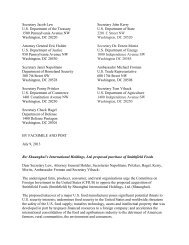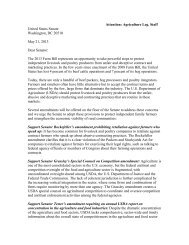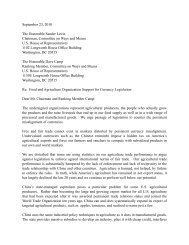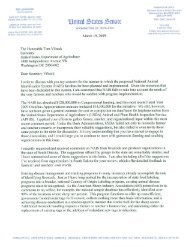Exhibit 8, 100416 Brazil FMD Risk Evaluation - R-Calf
Exhibit 8, 100416 Brazil FMD Risk Evaluation - R-Calf
Exhibit 8, 100416 Brazil FMD Risk Evaluation - R-Calf
You also want an ePaper? Increase the reach of your titles
YUMPU automatically turns print PDFs into web optimized ePapers that Google loves.
In 2005, Santa Catarina’s official veterinary service issued 272,000 movement permits, which<br />
included the movement of 14 million <strong>FMD</strong>-susceptible animals. Ninety-two percent of the permits<br />
were issued for intrastate movement and the other 8 percent permitted movement to other States,<br />
especially neighboring ones. Ninety-six percent of the animals moved were swine. Fifty-three<br />
percent of those were transported to slaughter. Cattle movements accounted for 3.7 percent of all<br />
movements, and small ruminants accounted for less than 1 percent. In the period from January to<br />
October 2006, a total of 258,000 GTAs were issued allowing the movement of 11 million <strong>FMD</strong>susceptible<br />
animals. Similar percentages were reported in 2005, with swine representing 94 percent<br />
of all animals moved [4].<br />
Table 3 shows the movement of <strong>FMD</strong>-susceptible and nonvaccinated animals into Santa Catarina<br />
from other <strong>Brazil</strong>ian States recognized by MAPA as <strong>FMD</strong> free or where vaccination is practiced.<br />
All movements are recorded by GTAs and the animals were inspected at the point of entry. The<br />
entry is regulated by the Normative Instruction SDA 05/2003[4].<br />
In specific cases of swine, in 2005 and 2006, only animals for reproductive purposes from Certified<br />
Swine Breeding Farms (Granjas de Reprodutores Suideos Certificadas – GRSC) were allowed into<br />
Santa Catarina. These farms have a high level of biosecurity, having been subject to certification by<br />
the official veterinary service every six months. The farms keep their own permanent veterinary<br />
assistance and only swine from other GRSCs can enter the premises. In 2006, swine that entered<br />
Santa Catarina came from 36 GRSCs. Animals from Mato Grosso do Sul and Parana, where <strong>FMD</strong><br />
outbreaks were reported, came from farms not located in the municipalities where the disease<br />
occurred.<br />
Santa Catarina is a large producer of swine. Of all the animals slaughtered in the State, only 2<br />
percent came from other States [4].<br />
Table 3. Entry of live animals for breeding in Santa Catarina in 2005 and 2006 [4]<br />
State of Origin 2005 2006<br />
Pigs Sheep and<br />
goats<br />
Pigs Farms of<br />
Origin<br />
Rio Grande Do<br />
Sheep and<br />
goats<br />
4,380 612 5,478 11 843<br />
Sul<br />
Paraná 15,920 111 17,459 11 0<br />
Minas Gerais 14,450 0 10,747 6 0<br />
Goiás 7,470 0 5,610 2 0<br />
São Paulo 413 0 2,465 4 104<br />
Mato Grosso do<br />
0 0 2,925 1 0<br />
Sul<br />
Mato Grosso 100 4 500 1 4<br />
Total 42,733 727 45,184 36 951<br />
*certified Swine Breeding Farms (GRSC), with biosafety level defined by Normative Instruction SDA 19<br />
APHIS <strong>Evaluation</strong> of the Status of the <strong>Brazil</strong>ian State of Santa Catarina 33











